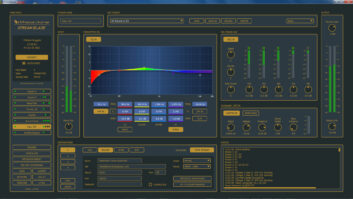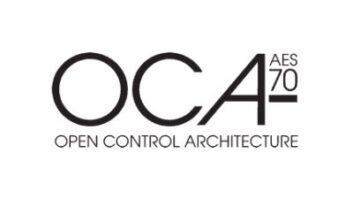
It looks like I will be taking on a substantial studio renovation this year. Some money has opened up, after a couple of years in which capital projects could not be funded. Here’s hoping more of my colleagues will hear similar good news soon.
For me, and probably you too, large projects are rewarding work. We get a chance to show what we can do with the right resources and time to plan, unlike the daily repair cycle, which is mostly just reacting to rapidly changing circumstances with troubleshooting skills, flexibility and efficiency.
On a big project, we become designers rather than maintainers.
WHERE TO START
Studio projects are not like other engineering work.
Only a relatively small number of people will use or even see your new transmitter or automation system. Few want a tour of a tower site. The main goal in such projects is to build a reliable, high-performance system while trying to keep costs at a reasonable and efficient level.
Studios, on the other hand, are used by a lot of people and for many purposes. These facilities present a public face of the organization during listener tours (which are very popular at our station). Other factors, such as ergonomics, come into play, because a studio is meant for people, who perform better when they are comfortable with a particular space.
There can be many competing goals and corresponding need for tradeoffs. Even the possibility of future programming changes should be considered, since typical studio builds have a life of around 10–15 years before new equipment begins to make sense. That is a long time.
If a project affects a large group, I like to start by offering to meet with as many of the studio users as possible to talk about what they need and what they would like. This step is crucial to my understanding of exactly what people need the technology to do for them.
The question is by no means straightforward. When I get a group of users together to talk about their programs, I always am surprised by the kinds of comments I hear about what works, what doesn’t and why. While I pride myself on being up on the latest in technology, this doesn’t mean I am working with the details of how a radio show is produced on a daily basis.
Users amaze me, both with their technical sophistication and their ambitious ideas on how to create good radio. Well OK, not all users; but as a designer it is my role to offer out the right palette of technological tools that helps them accomplish their goals. Without an open exchange of ideas, it is hard to know what is needed and what the goal of the project should be.
Some of the best ideas come out of these open meetings.
DON’T FORGET THE OWNERS
Meeting with the users is important but only a part of helping to define the goals of a project.
The central task in completing any successful project is to understand the interests and requirements of the owners, who are working to provide the money and staff resources that allow it to happen.
In classic project management, the term for this group is “key stakeholders.” Key stakeholders tend to be at the managerial level rather than users (although not always, as in the case of highly paid air talent). Typical key stakeholders might be the general manager, program director or head financial officer. Your direct supervisor usually is a key stakeholder in the project. Without the support of at least most of this group, a project can be delayed or even founder completely. It is essential to understand this group and to work with them to provide what they need.
And this is where things can get tricky.
Key stakeholders are people, not roles in an organizational chart. They have their own competencies and insecurities.
A particular individual may want to be involved in ways that do not reflect his or her position in the organization. Some key stakeholders have more authority than others, meaning that in a conflict of ideas, the higher authority position generally will prevail.
A sophisticated designer develops the skill to figure out what the key stakeholders want and which ones matter most, sometimes to the point of having to read between the lines of what is said or written. This is never an easy task, especially for engineers.

Meeting with users to find out what works and what doesn’t is a crucial step in designing a new space. iStockphoto/Jacob Wackerhausen To make matters more complicated, key stakeholders tend to be the busiest and most distracted people. If asked directly about what they think, they may not have time to tell you much of anything. Most are used to delegation and practice it in every aspect of their lives.
Key stakeholders rarely want to participate at the ground floor, but want to come in when a lot of planning and thinking has been done already. This allows them to use their expertise most efficiently. It also virtually guarantees that a design process will involve repeated iterations as ideas are collected, assembled and then reviewed by the various layers of key stakeholders. That’s another way of saying that a lot of design work is done and then gets thrown out if the key stakeholders don’t end up liking it.
However, the more iteration, the further the design can get from the original intentions of the users. Com¬municating final plans to the end users needs to be handled delicately, since it will not be possible, or even desirable sometimes, to include all of their ideas in the final design. The outcome, if not handled properly, can be a studio that no one wants or likes, even though the key stakeholders signed off on it.
SUCCESS IS POSSIBLE
In practice, while what I just described above can be discouraging, the fact is that the process of managing a successful project design is rewarding.
Yes, there are moments when you have to throw out a lot of work and alter your thinking, but this is how projects work. Key stakeholders may be frustrating in some ways, but most did not get to where they are without being fairly intelligent, and they understand the most fundamental limits on a particular project. They usually will listen to a well-stated argument and come around to a different point of view if it makes sense. It does not seem to be too steep a requirement that, as designers, in the end we need to make sense.
Design for studios boils down to making the best possible facility to accomplish as much of what you want to do as is feasible. As such, there generally will be significant tradeoffs in the final product. For us as engineers, this is actually understandable and reasonable. We are used to the limits of physics, and tradeoffs are just another way of looking at physical limits.
Right now, I am just in the beginning stages of this project. As this year goes on, I will revisit our progress in studio renovation to let you know how the project is going, some of the key limitations on the design and how it all turns out.












